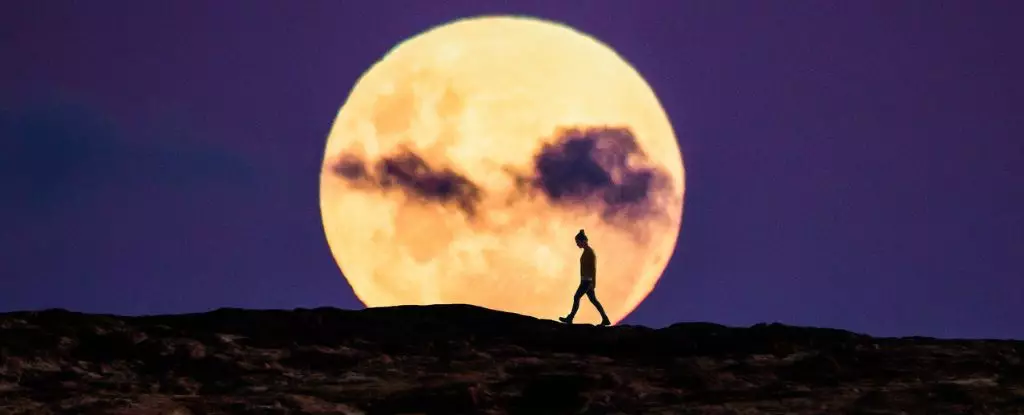This week, stargazers and casual observers alike will be treated to a spectacular celestial event: the largest and most prominent supermoon of the year. According to NASA, the supermoon will maintain its full appearance from Tuesday evening until Friday morning, offering ample time for sky enthusiasts to marvel at this extraordinary sight. However, the most opportune moment to experience its brilliance occurs on Wednesday evening into Thursday morning when the moon will come closest to Earth.
The phenomenon of the supermoon combines two captivating astronomical events: a full moon and the moon’s perigee, its closest approach to Earth. This particular full moon is set to be about 14% brighter than an average moon, captivating those who venture outdoors to embrace the beauty above.
The precise definition of a supermoon refers to a full or new moon that coincides with perigee. According to expert Jennifer L. Hoffman, the director of the Chamberlin Observatory, this is an occurrence that is easily observable, even from urban settings. Unlike the more elusive meteor showers or star constellations, the supermoon is visible without the need for telescopes or other special equipment.
On Wednesday at approximately 8:50 p.m. ET, the moon will be at its nearest point to Earth, sitting 221,938 miles away—about 17,000 miles closer than its average distance. The full moon will officially make its appearance on Thursday morning at 7:26 a.m. ET. With this alignment of celestial mechanics, the ideal time to glimpse the full moon is at moonrise on either Wednesday or Thursday, according to astronomer Wes Ryle from the Cincinnati Observatory.
One fascinating optical phenomenon accompanies this event: when the moon is near the horizon, it appears larger to observers due to visual references such as trees and buildings. This illusion highlights the incredible nature of the moon and why it has captivated humanity for centuries.
While the supermoon can be enjoyed with the naked eye, utilizing a telescope can enhance the experience tenfold. Ryle suggests that seeing the intricate details of the moon’s surface through a telescope is an unforgettable pleasure, especially when shared with friends or family. If you’re interested in capturing the exact time the moon will rise from your location, various online resources provide moonrise and moonset calculators tailored to specific geographic areas.
This month’s supermoon is part of a quartet of supermoons that have graced this year’s sky. The next one is anticipated in November. What sets this particular supermoon apart is its proximity to perigee being optimal compared to the others, thus making it the most visually magnificent lunar experience of the year. Ryle notes that this supermoon is slightly larger than the September supermoon, making this event a must-see.
Additionally, the full moon this week is known as the Hunter’s Moon. This title pays homage to the season when hunters traditionally prepare for the approaching winter, as animals begin to gather nourishment for the colder months ahead. The Hunters Moon carries a rich historical significance that ties human activity to the natural rhythms of the environment.
It’s worth noting that while supermoons are not particularly rare, opportunities to view them in succession can create memorable astronomical events. If you miss this supermoon, don’t fret; more will follow soon, although some may not have the same visual impact due to variations in alignment with new moons.
Looking Ahead to Future Supermoons
For those fascinated by lunar events, the future holds promise as another cluster of supermoons will occur in October, November, and December of 2025. Meanwhile, this year’s series invites everyone to step outside, unplug, and take a moment to appreciate the wonderment of a steadfast celestial body that has inspired minds and hearts throughout history.
The biggest supermoon of the year presents a delightful opportunity to connect with nature and relish in the grandeur of our universe. Prepare your evening plans, capture the moment, and immerse yourself in this enchanting experience.

